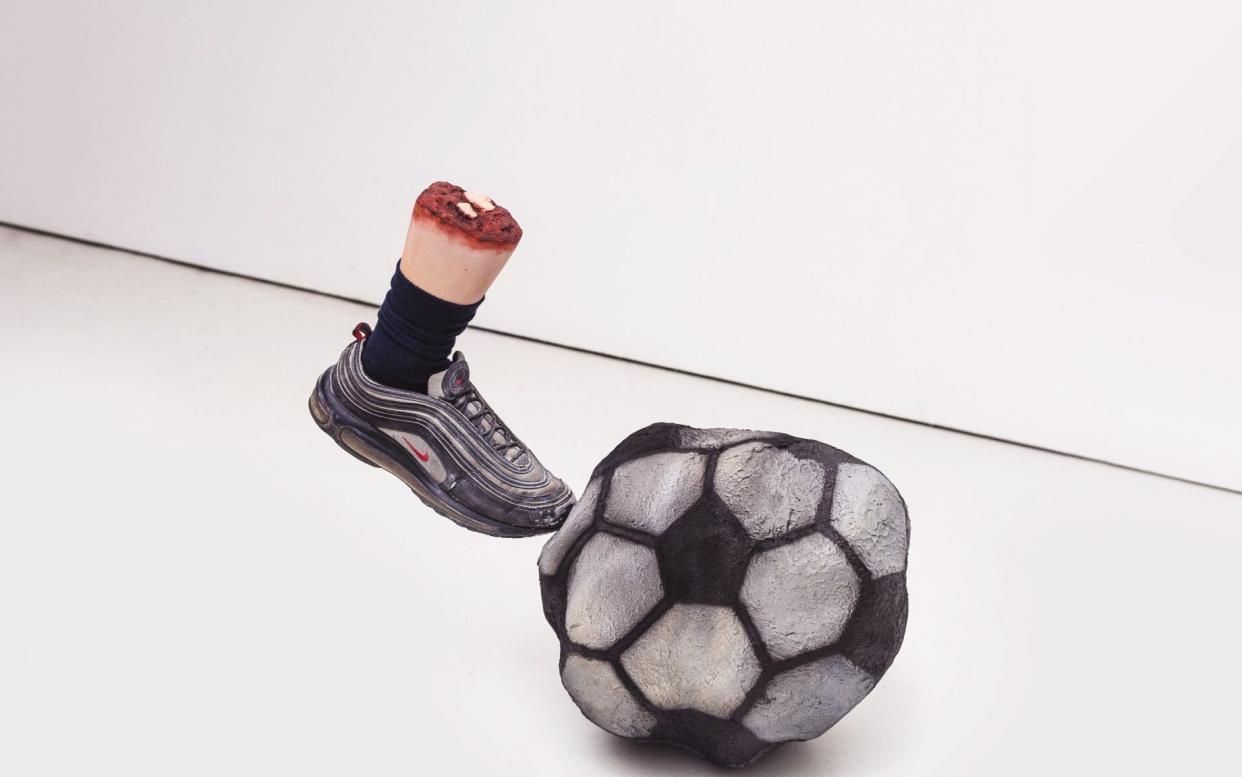What can art inspired by 'the beautiful game' tell us about society?

You can’t miss it, heading up the High Road from Seven Sisters in north London: Tottenham Hotspur Stadium, looming like a mothership touching down on a remote planet. In its shadow is something equally alien: London’s latest art gallery, temporarily housed in Warmington House, the Grade II-listed former residence of a 19th-century coal merchant. Now owned by the Premier League football club, this beautiful building sits incongruously beside the “Tottenham Experience” outlet. If the solar system of the capital’s art galleries orbits around the West End, then OOF, nestled among N17’s fast-food joints and betting shops, is galaxies away in outer space.
Its founders, the dealers and curators Justin and Jennie Hammond, and Time Out’s art critic Eddy Frankel (who together, in 2018, launched OOF, the biannual art-and-football magazine), can’t believe their luck: long-suffering Spurs fans, they’ve persuaded the Lilywhites to lend Warmington House for their new gallery specialising in football-related art.
Inside, with its wooden floorboards, freshly painted white walls and brass fittings, OOF could be mistaken for an upmarket Mayfair exhibition space. The vibe, though, is friendly, not haughty: the only (tongue-in-cheek) prohibition, at the entrance, reads: “Please don’t touch (or kick) the art”.
Frankel hopes that the various, easy-to-understand sculptures incorporating footballs which comprise OOF’s inaugural exhibition will serve as a sort of “gateway drug” to art. Anyone who has flicked through an issue of OOF will know that its editors aren’t interested in football per se, but in what the “beautiful” game reveals about society.
And thankfully (for art fans), there isn’t a single work representing something that could happen on a pitch. Indeed, some of the show’s artists seemingly care little for the sport. A few even invoke Spurs’ nemeses. Sarah Lucas, for instance, represented by a concrete cast of a football like a pocked and dirty moon, has dedicated a ton of work to Arsenal legend Charlie George. Lana Locke’s “Celery FC” (2012), a bronze cast of a sorry-looking stick of celery nuzzling a chewed-up old football, alludes to a chant sung at Stamford Bridge.

If there is a theme, it’s the subversive idea that the model of masculinity which footballers project is, on reflection, surprisingly brittle – and sometimes homoerotic. There’s a lot of work about fragility: Gavin Turk’s tiny, precarious eggshell, painted to imitate a scuffed black-and-white ball; Marcus Harvey’s enormous bronze “Victoria” (2008), cast to resemble a slashed, deflated leathery scrap from the Sixties, ironically titled after England’s World Cup glory.
On this evidence, football was a well-worn trope for the brash YBA generation that reclaimed working-class culture during the 1990s and, after a hiatus, it seems to be in fashion again. For instance, JJ Guest develops the football-and-vulnerability thread: hanging above a fireplace, his gracefully concise and witty sculpture “Balls” (2021) consists of a pair of pristine porcelain footballs suspended in a white-netting sack to resemble a part of a bloke’s anatomy that he wouldn’t want kicked.
Will the glitterati schlep across town to visit OOF? In a sense, it doesn’t matter. On match days, 20,000 fans traipse through the club shop next door. If, when the season starts up again in a few weeks, even a fraction can be tempted into this refreshing exhibition, that, surely, will count as a result.
From July 23 until Nov 21; information: oofmagazine.com


